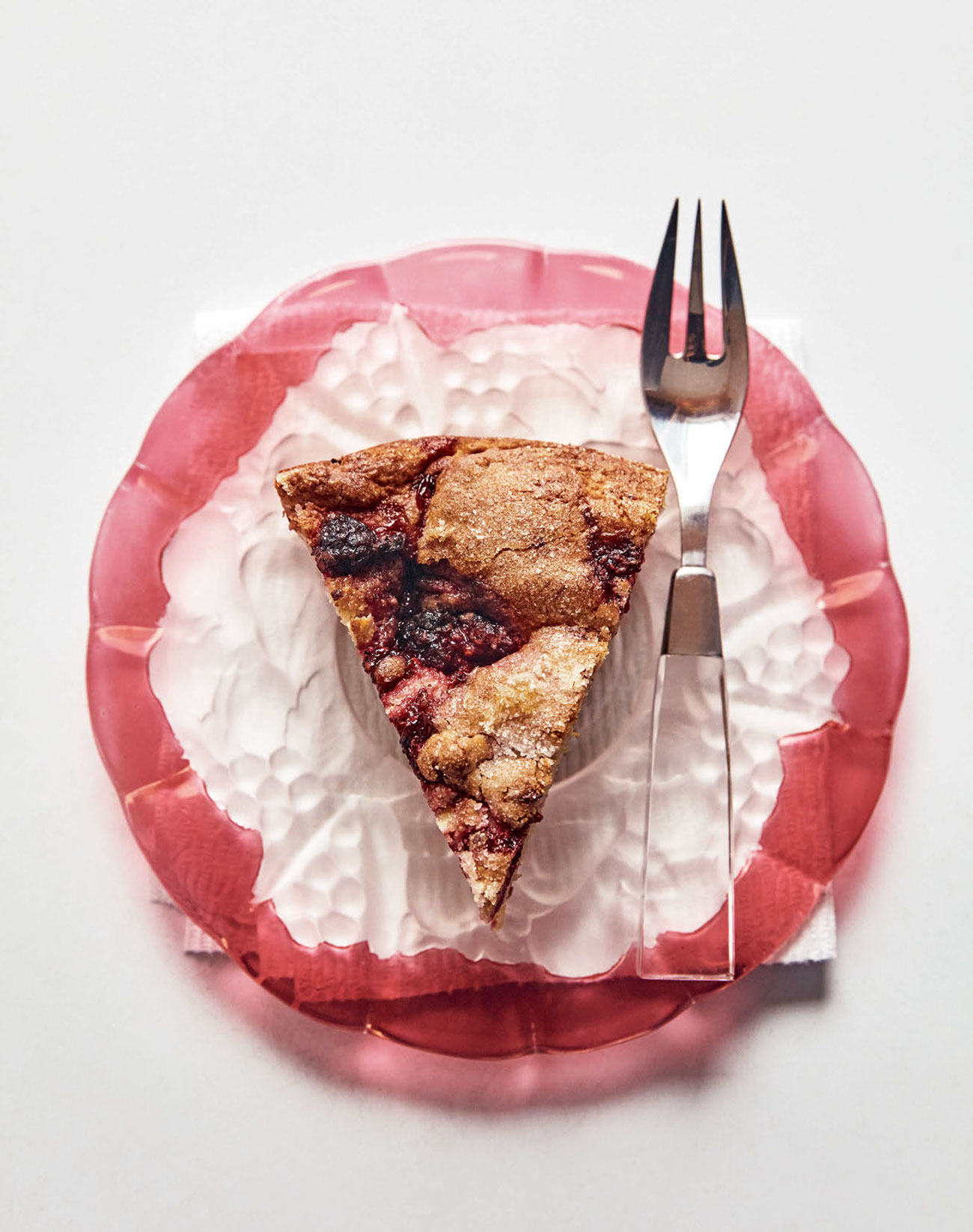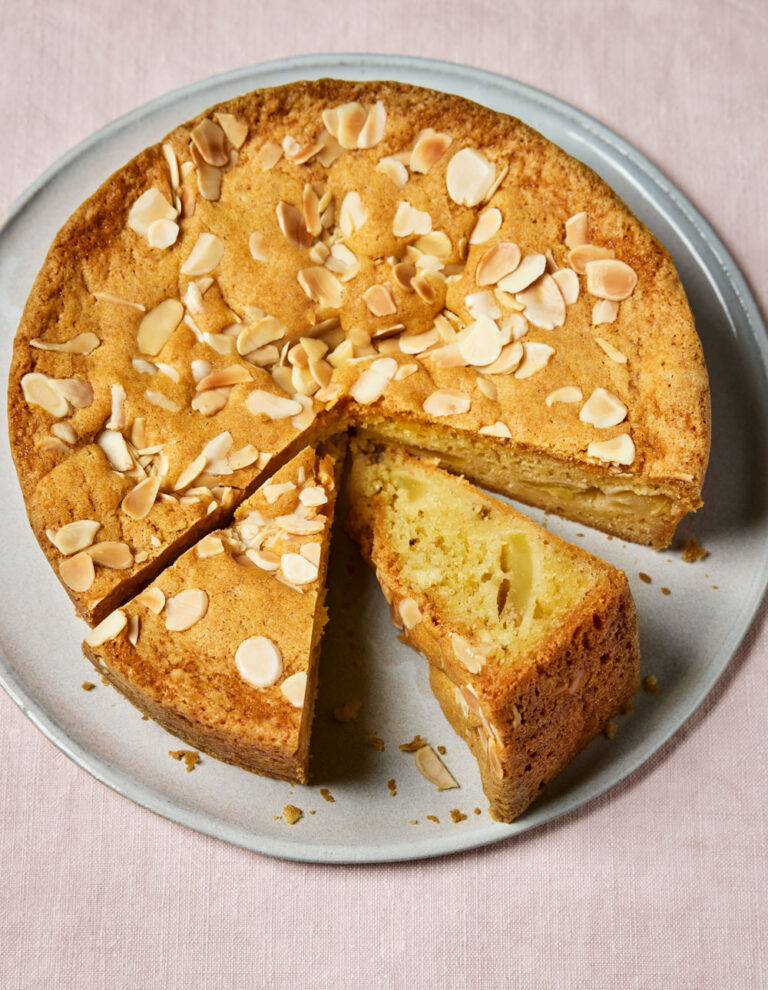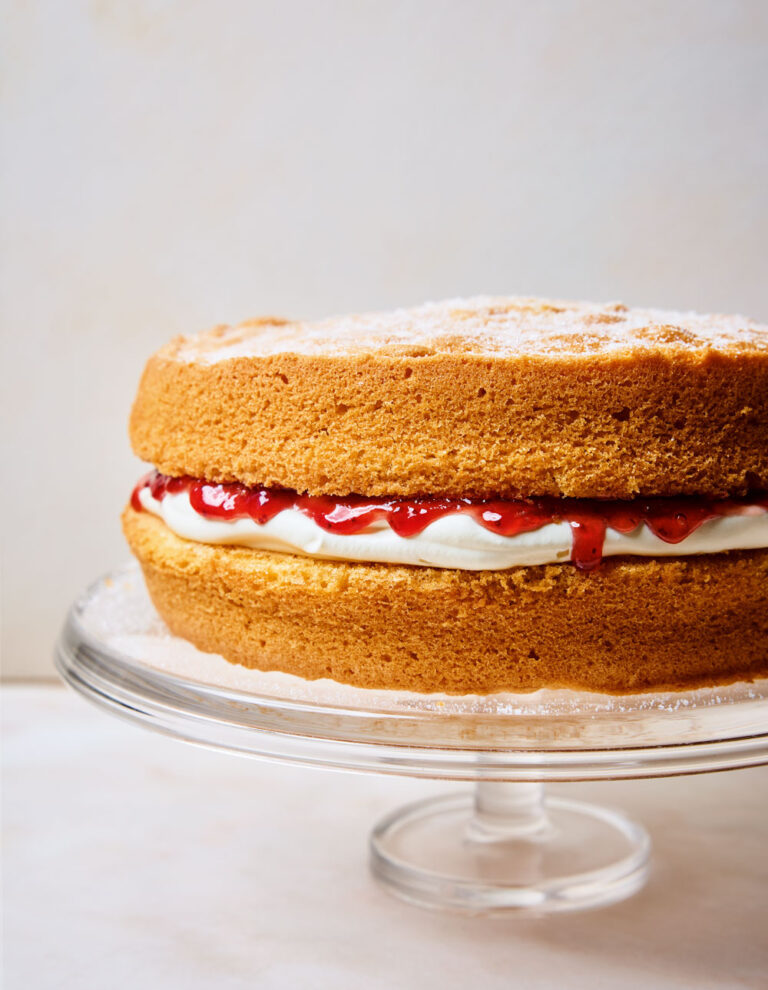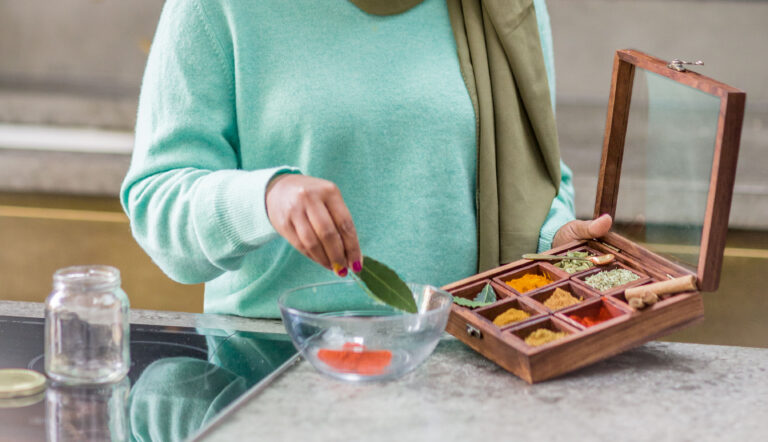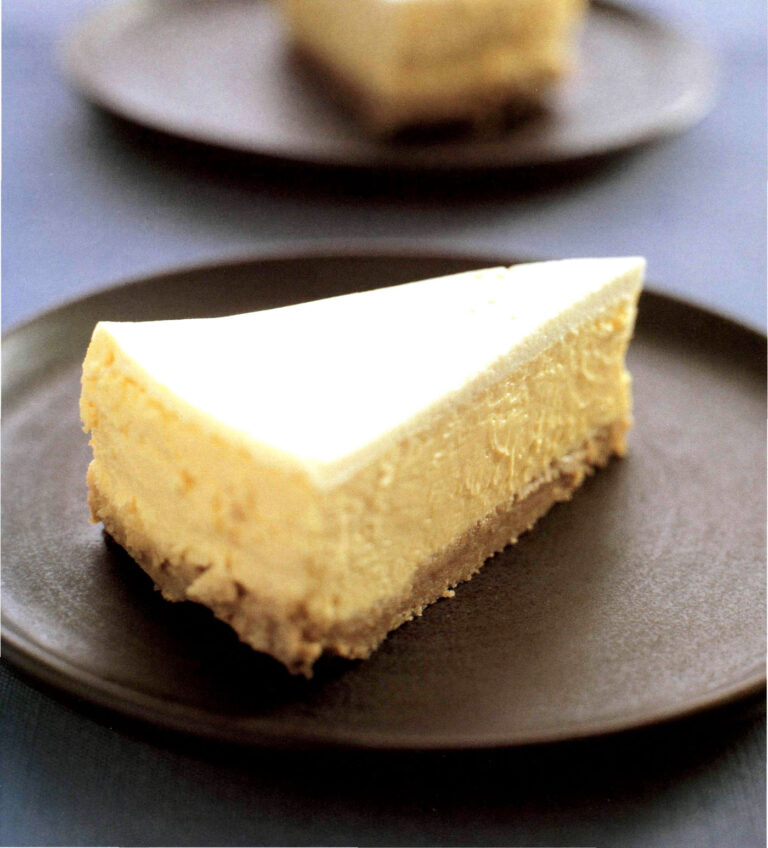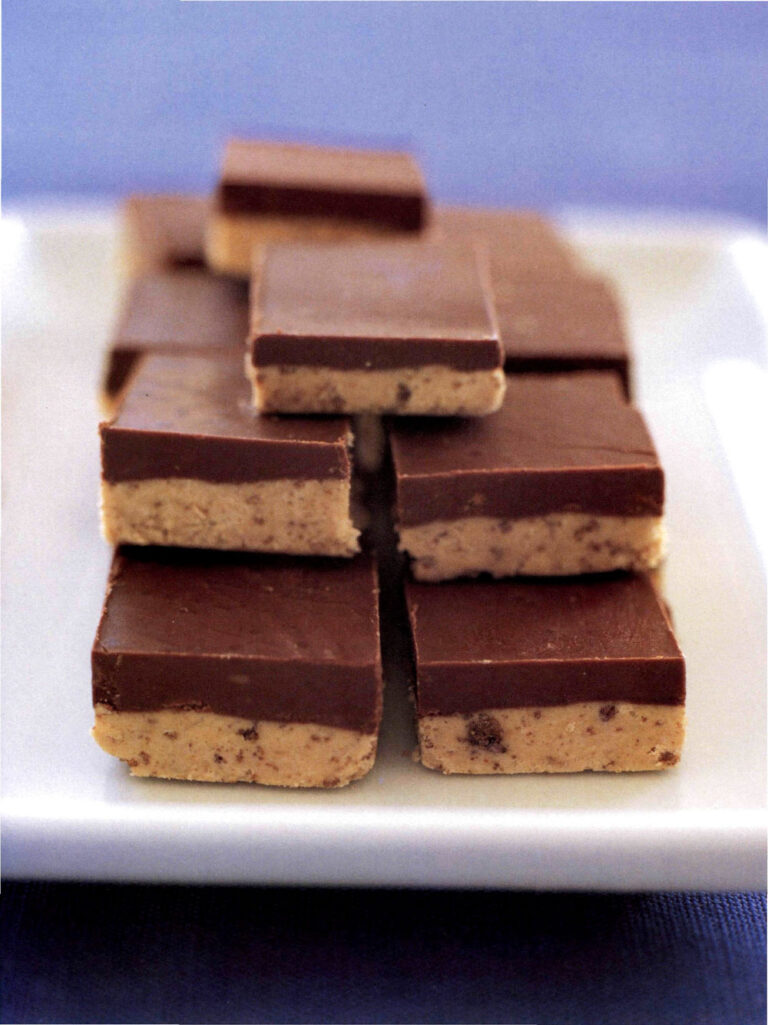Carolina Gelen’s Upside-Down Orange Cardamom Olive Oil Cake
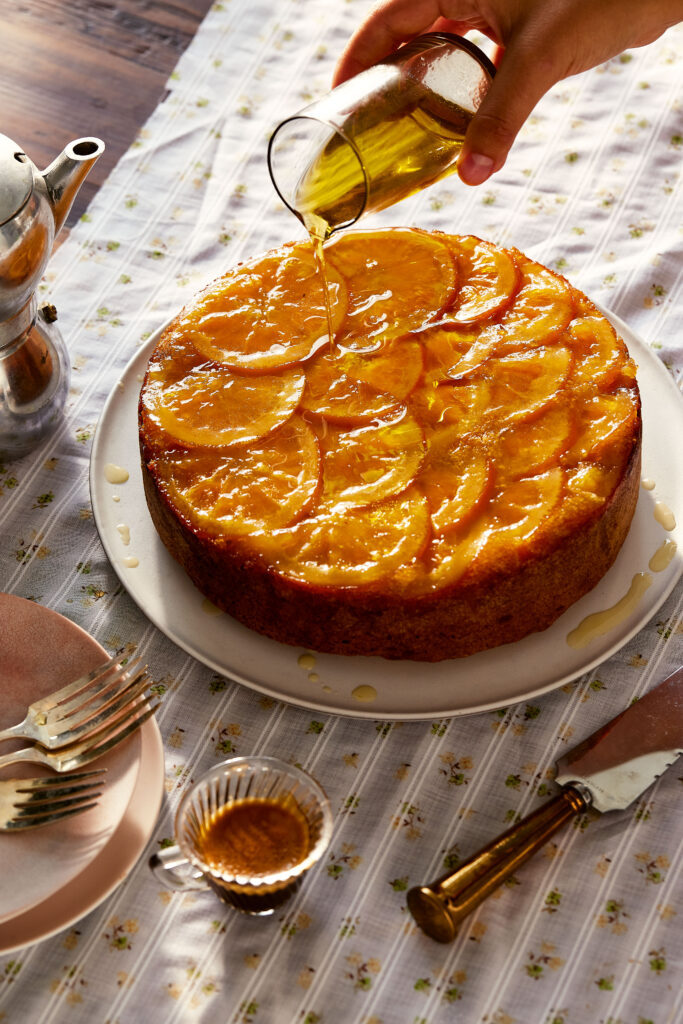
This fragrant olive oil and citrus cake from Carolina Gelen has an intricate topping of crystallised oranges in cardamom syrup. A true celebration of citrus fruit, you can switch it up with different varieties of orange, clementines and lemons as they come into season.
Introduction
Imagine a layer of slowly simmered oranges in cardamom sugar, wrapped around a soft olive oil cake. Olive oil in a cake might seem like an odd choice, but its bright sharpness brings such a memorable, unique flavour to any dessert and a level of moisture that will have you coming back for more. Flavoured with floral cardamom and sugar-rubbed orange zest, the cake gets better and better as it sits at room temperature. It’s one of my most loved recipes for a reason and I am so excited to see your version of it. If you’re feeling frisky and want to try other citrus options, most oranges will work, from navel oranges to blood oranges to mandarin oranges or celmentines. Meyer lemons are also a great alternative, especially with a scattering of sugar mixed with citric acid, for some extra tang. Limes, however, get a little too bitter.
Ingredients
| For the crystallised oranges: | |
|---|---|
| 3 medium | oranges, gently scrubbed |
| 250g | sugar |
| 5 | green cardamom pods, crushed, or 1 teaspoon (2g) ground cardamom |
| For the orange cardamom olive oil cake: | |
| extra-virgin olive oil, for the baking tin and oranges | |
| 265g | sugar |
| 2 tbsp | (8g) grated orange zest (about 2 oranges) |
| 12 | cardamom pods, freshly ground and pods removed, or 2 teaspoons (4g) ground cardamom |
| ½ tsp (3g) | coarse salt |
| 4 medium | eggs |
| 155g | extra-virgin olive oil, plus more for serving |
| 4 tbsp (56g) | fresh orange juice (about 1 medium orange) |
| 1 tsp (5g) | vanilla extract |
| 250g | plain flour |
| 1 tsp (4g) | baking powder |
| ¼ tsp (1g) | bicarbonate of soda |
Essential kit
You will need: a 25.5cm round cake tin or springform tin or a 23cm square tin.
Method
Make the crystallized oranges: using a sharp knife, cut the oranges into 3mm thick slices. (Reserve the orange ends and any thicker slices cut by mistake for snacking or juicing.) Store the orange slices in a medium bowl.
In a medium saucepan, combine 315g water, the sugar and cardamom, swirling to combine. Cut a nonstick baking paper round slightly smaller than the diameter of the saucepan and cut a small hole in the middle. This is called a cartouche (nonstick baking paper lid). Add the oranges to the pan and place the cartouche right on top, making sure it touches the oranges. This will keep them submerged in the liquid while simmering.
Bring the mixture to the boil over a medium heat. Reduce the heat to medium-low and simmer until the orange rind is softened and the pith is less opaque, 40–50 minutes. Remove the pan from the heat.
Meanwhile, make the orange cardamom olive oil cake: preheat the oven to 180°C/gas mark 4. Brush a 25.5cm round cake tin or springform tin or a 23cm square tin with olive oil. Line the base and the sides of the tin with non-stick baking paper and brush with a little more oil. Line a baking sheet with non-stick baking paper and place the cake tin on the baking sheet; this will catch any potential sugar drippings.
In a medium bowl, combine the sugar, orange zest, cardamom and salt. Rub them together using your fingers until the mixture is pale yellow and fragrant. Add the eggs and vigorously whisk until the mixture becomes light, fluffy and pale, 4–5 minutes by hand or 2–3 minutes if using an electric mixer. Constantly whisking, slowly stream in the olive oil. Add the orange juice and vanilla and whisk to combine.
In a small bowl, whisk together the flour, baking powder and bicarbonate of soda. Using a silicone spatula, gently fold the dry ingredients into the wet ingredients, making sure to incorporate any dry patches into the batter. Arrange the syrupy orange slices on the base of the cake tin, creating a scallop pattern. Instead of going in circles around the cake, overlap the orange slices into straight lines. Try not to leave gaps in between orange slices as the cake batter will seep through. Repeat until the base of the tin is fully covered in orange slices. Arrange any remaining slices around the edges of the tin. Drizzle 2 tablespoons of the cardamom orange syrup over the orange layer and lightly drizzle the oranges with 2 tablespoons of olive oil (see Note). Carefully pour the cake batter over the orange slices.
Bake, checking on the cake after about 30 minutes. If the cake seems to be browning too fast on top, cover with foil and continue baking. Bake until the cake is solid, springy (but not wobbly) and a skewer or cake tester comes out clean (a few crumbs are okay; just make sure there is no raw cake batter on the skewer), 30–45 minutes longer. All ovens are a little different, hence the roomy time range.
Allow the cake to cool for 10 minutes in the tin. Place a large serving plate over the cake tin and carefully flip, ending up with the plate at the bottom and the cake tin upside down on the plate. Remove the springform collar if you used one. Gently lift the tin off the cake and peel off the nonstick baking paper to reveal the orange pattern. Brush some of the reserved orange cardamom syrup on top of the cake and drizzle more olive oil on top. Slice and serve.
Note: you will be left with quite a bit of orange cardamom syrup. Don’t throw it away! Strain the syrup into a takeaway container or jar, date it, label it and store it in the fridge. Mix it with sparkling water and lemon or lime juice for a refreshing bev, or save it for any future cocktail opportunities.
Reviews
4 Ratings
Have you tried this recipe? Let us know how it went by leaving a comment below.
In the case of any queries, our team will aim to respond as soon as possible.
Please note: Moderation is enabled and may delay your comment being posted. There is no need to resubmit your comment. By posting a comment you are agreeing to the website Terms of Use.
